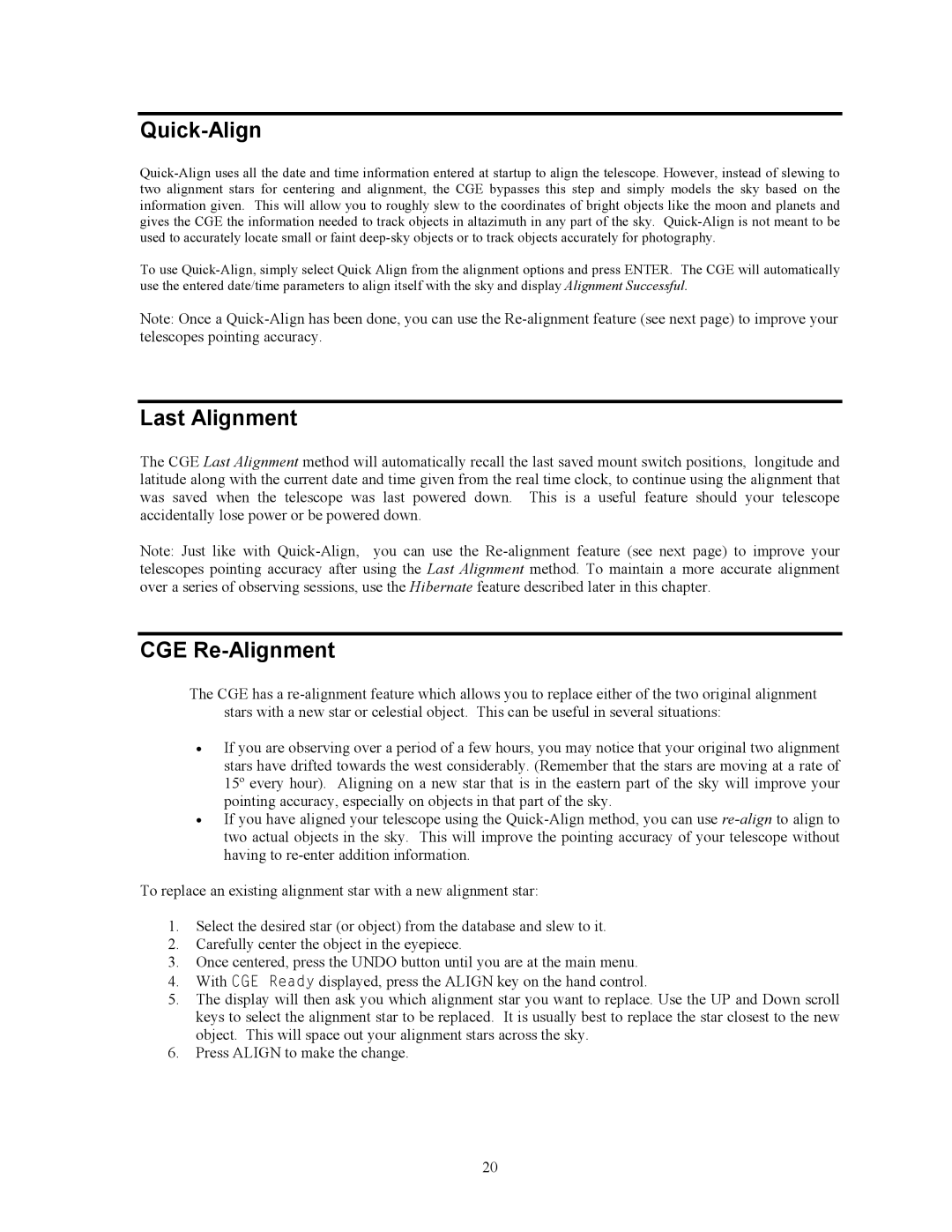
Quick-Align
To use
Note: Once a
Last Alignment
The CGE Last Alignment method will automatically recall the last saved mount switch positions, longitude and latitude along with the current date and time given from the real time clock, to continue using the alignment that was saved when the telescope was last powered down. This is a useful feature should your telescope accidentally lose power or be powered down.
Note: Just like with
CGE Re-Alignment
The CGE has a
•If you are observing over a period of a few hours, you may notice that your original two alignment stars have drifted towards the west considerably. (Remember that the stars are moving at a rate of 15º every hour). Aligning on a new star that is in the eastern part of the sky will improve your pointing accuracy, especially on objects in that part of the sky.
•If you have aligned your telescope using the
To replace an existing alignment star with a new alignment star:
1.Select the desired star (or object) from the database and slew to it.
2.Carefully center the object in the eyepiece.
3.Once centered, press the UNDO button until you are at the main menu.
4.With CGE Ready displayed, press the ALIGN key on the hand control.
5.The display will then ask you which alignment star you want to replace. Use the UP and Down scroll keys to select the alignment star to be replaced. It is usually best to replace the star closest to the new object. This will space out your alignment stars across the sky.
6.Press ALIGN to make the change.
20
